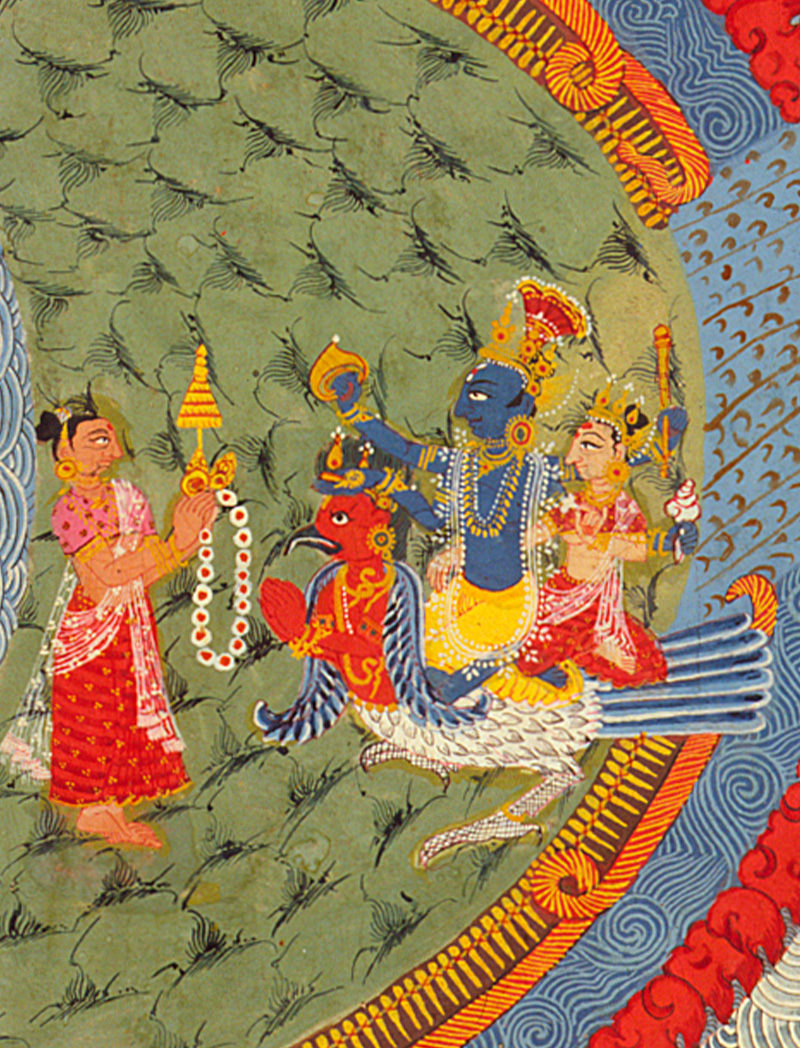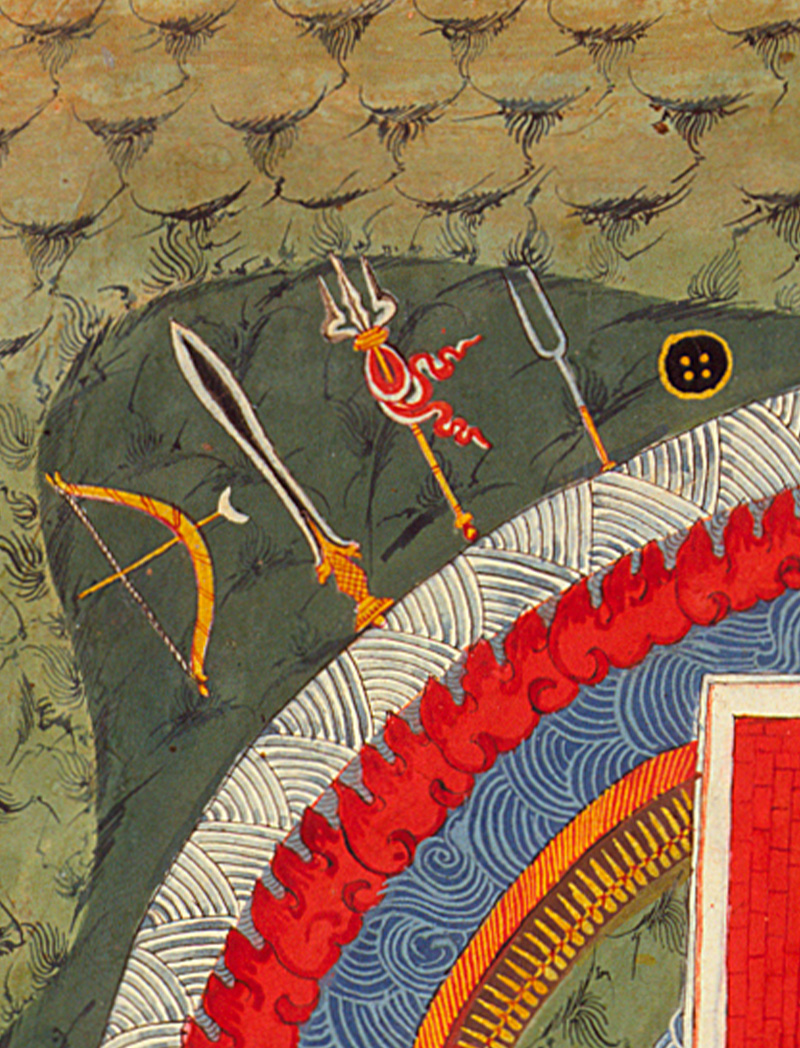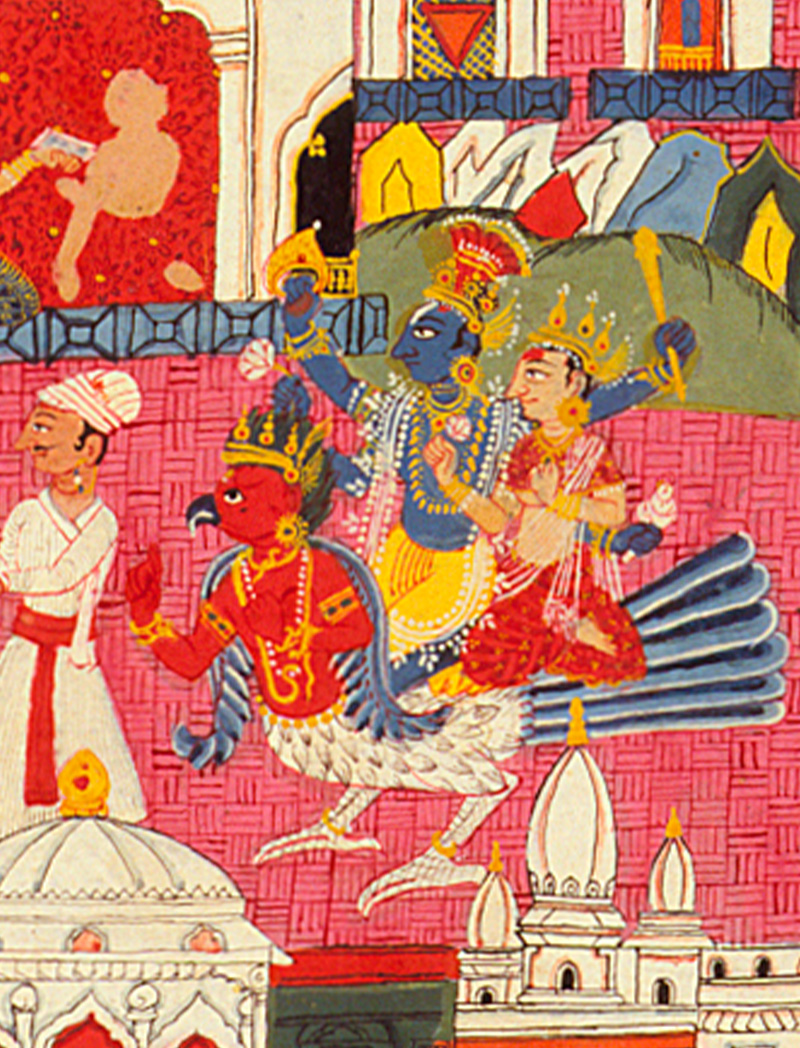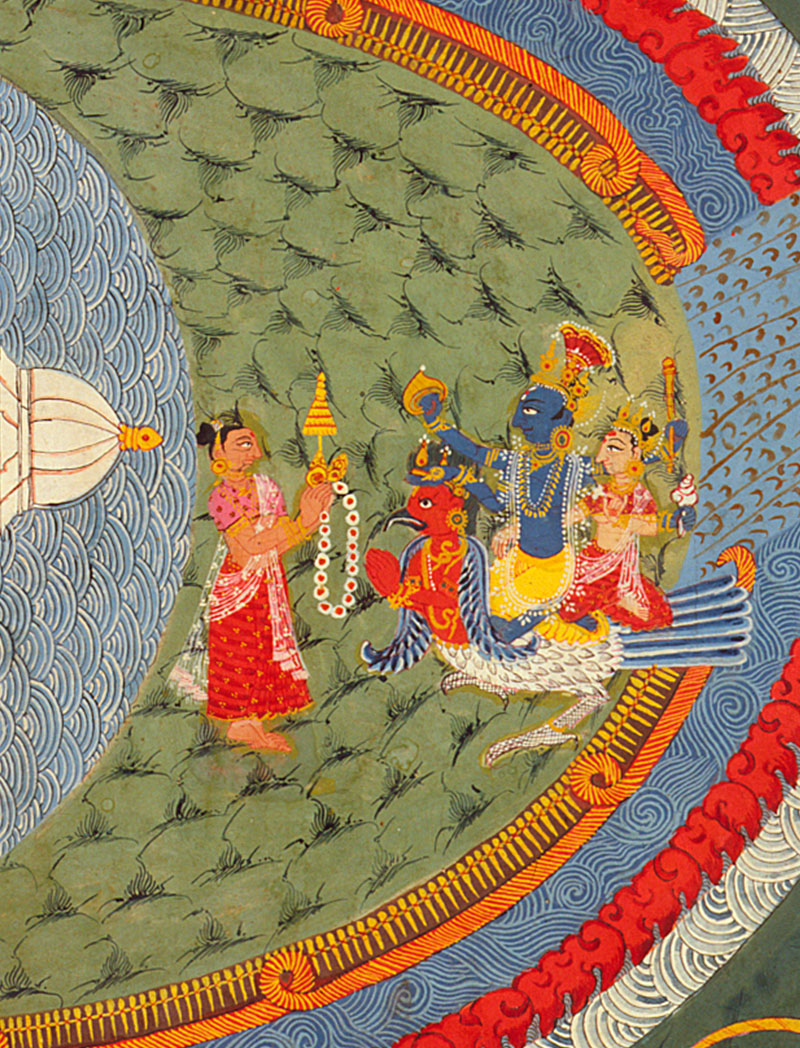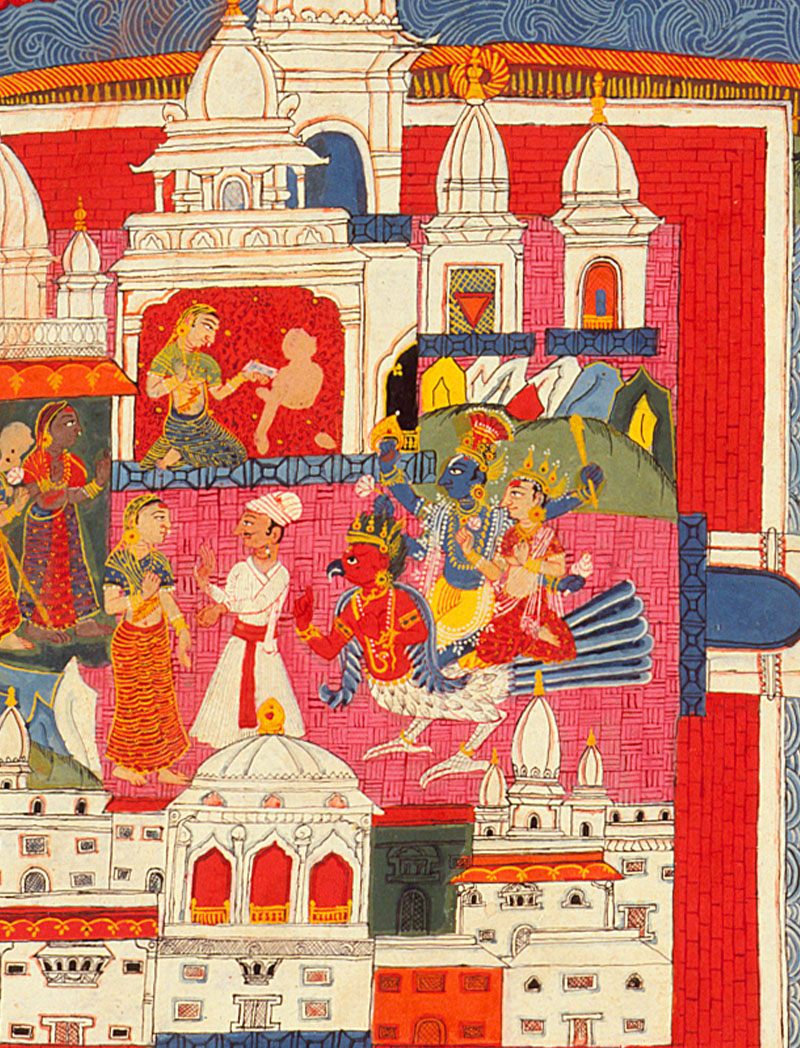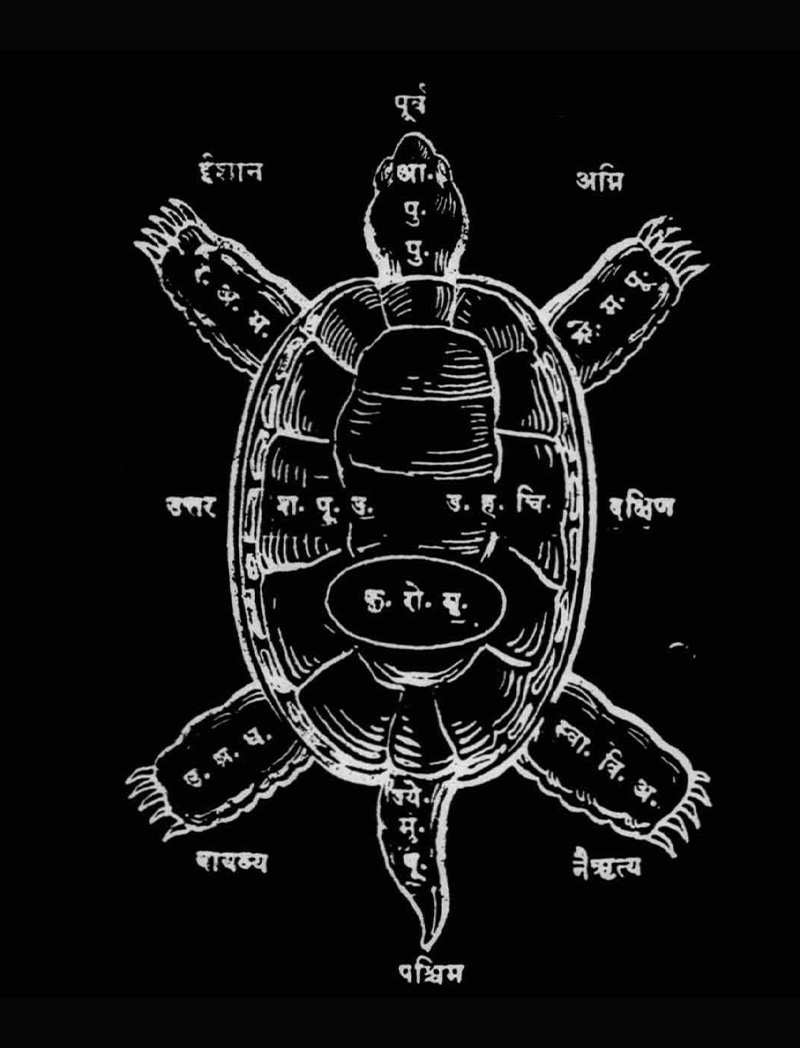PERSPECTIVES
What Makes a Tortoise Representative of the Earth in Bhagavata Purana?
A Nepalese eighteenth-century illustrated folio from one of the many editions of the Bhagavata Purana, which recounts the life of Krishna, the painting, Story of Narakasura, has a number of elements that together make it so engrossing — the splash of brilliant colours, the undulating lines, the various little weapons that surround the edge and most significantly, the palace balanced atop a giant tortoise!
In this miniature painting, Krishna and his consort descend from the skies on Garuda, his bird-like mount, to visit the palace of the demon Narakasura, the mythical asura king of Pragjyotisha (believed to be modern-day Assam) amidst great ceremony.
The tortoise, as a symbol of the earth as a whole, often appears in South Asian — especially Hindu — cosmographical texts, from the vedic Brahmanas (mid-first millennium BCE) to the later Puranas (fourth–sixth century CE). According to this representation, the tortoise’s domed shell is heaven and the flat underside is the earth. Another noteworthy feature of the painting is the plotting of the water bodies in concentric shapes. There is the central one in a blue half-moon pattern, on which the palace rests. There are also the peripheral oceans, one in blue swirls and the other in a white basketweave pattern, separated by a ring of red mountains.
Why, of all the animals, a tortoise as the earth? One possibility is that the tortoise was one of the preserver Vishu’s avatars. Further, the kurmanivesha (tortoise abode) is central to Hindu astrology, wherein the body of the tortoise would be divided up into nakshatras (constellations) that influenced the regions occupying a certain body part. For instance, the head often represented the eastern region of the earth.
Interestingly, some sources also believe that Krishna’s grandson, Aniruddha, fell in love and married Usha (pronounced Uxa in Assamese), the daughter of Banasura, another asura king of Pragjyotisha.




